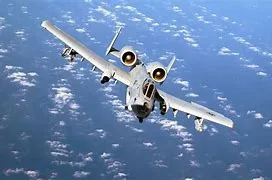Introduction- US and UK Strikes

In a dramatic turn of events, the US and UK militaries launched a series of air-strikes targeting multiple Houthi-controlled areas in Yemen on Thursday.
This significant response came in the wake of repeated warnings from the Biden administration and its allies, indicating that the Iran-backed militant group would face consequences for its ongoing drone and missile attacks on commercial shipping in the Red Sea.
Biden’s Direct Response

President Joe Biden emphasized the gravity of the situation, stating that he ordered the strikes “in direct response to unprecedented Houthi attacks against international maritime vessels in the Red Sea.” The collaborative effort involved US military forces, along with support from the United Kingdom, Australia, Bahrain, Canada, and the Netherlands.
Striking Over 60 Targets
US and coalition forces executed precision strikes on over 60 targets across 16 Iranian-backed Houthi militant locations.
Lt. Gen. Alex Grynkewich, US Air Forces Central Commander, revealed that the targeted assets included command and control nodes, munitions depots, launching systems, production facilities, and air defense radar systems.
International Alarm and Escalation Concerns
The airstrikes underscored growing international concern about the threat posed to one of the world’s most critical waterways.
While the US had been cautious about direct strikes in Yemen to avoid escalation, the continuous Houthi attacks on international shipping ultimately compelled the coalition to take action.
Unprecedented Strike Against the Houthis
Notably, this marks the first known strike by the US against the Houthi rebels in Yemen.
The strikes, executed through fighter jets and Tomahawk missiles, targeted more than a dozen Houthi assets carefully chosen to degrade their ability to launch further attacks on vessels in the Red Sea.
Multinational Effort and Coalition Dynamics
The involvement of the USS Florida, a guided missile submarine, British Typhoon jets, and Voyager air-to-air refuelling tankers showcased the multinational nature of the operation. The UK’s contribution, comprising at least 14 successful hits on Houthi targets, highlighted the collaborative efforts in addressing the shared concern over maritime security.
French Cooperation and Precision Strikes
Rear-Admiral Emmanuel Slaars, joint commander of French forces in the Red Sea region, confirmed French naval forces’ patrol in the area, cooperating and sharing intelligence with the US.
A senior US military official emphasized the precision of the strikes, employing guided munitions to minimize collateral damage and avoid civilian population centers.
Turning Point: Tuesday Attacks
The Houthi attacks on Red Sea shipping earlier in the week served as the final straw, prompting President Biden to greenlight the strikes on Thursday. Despite ongoing preparations, the decision was made amidst Secretary of Defense Lloyd Austin’s hospitalization, with orders and monitoring conducted in real-time.
Concerns and Diplomatic Warnings
While weighing potential strikes, President Biden expressed hesitancy about getting drawn into a broader conflict in the Middle East. However, the White House made it clear that the repeated Houthi attacks on international shipping lanes were intolerable, impacting major shipping companies and necessitating a robust response.
International Diplomacy and UN Resolution
US Secretary of State Antony Blinken warned of consequences during his travels in the region and emphasized the defensive nature of potential military action. The United Nations Security Council passed a resolution condemning Houthi attacks, though some countries abstained, reflecting the complexity of international diplomacy.
Broader Implications and Ongoing Monitoring
As explosions were reported in Yemen’s Hodeidah, concerns arose about the humanitarian impact, emphasizing the need for ongoing monitoring.
The situation remains fluid, with the potential for more action against the Houthis, as indicated by a senior US administration official.
Conclusion: A Complex Geopolitical Landscape
The joint US and UK strikes in Yemen represent a decisive response to Houthi threats, navigating a complex geopolitical landscape.
The delicate balance of regional dynamics, potential escalation, and the interconnectedness of conflicts in the Middle East underscores the challenges faced by the international community in safeguarding crucial waterways and maintaining regional stability.
Recommended Reading:-https://citytimesnow.com/israel-we-are-at-war-after-an-attack-by-hamas/


